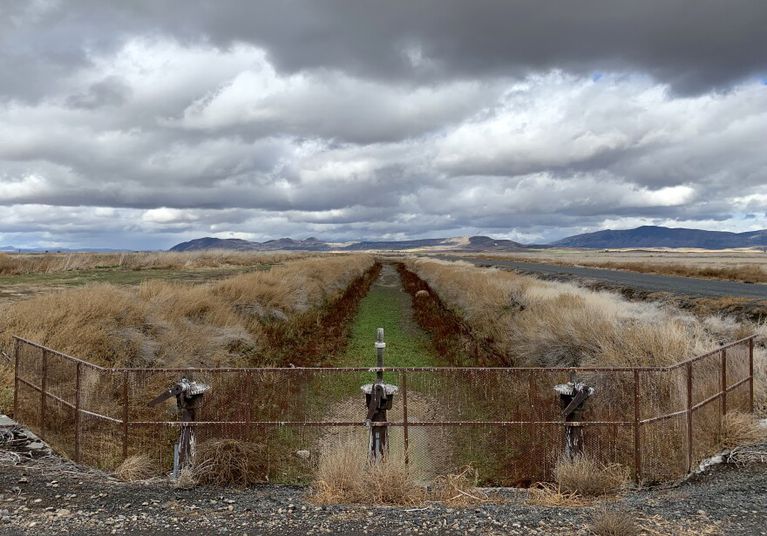There are many mallards, and a few geese however, as one of the major stops for birds that migrate the wetland is entirely dry this year.
And we could catch 5,000 birds right in this area right now,” he said.
Five thousand? It’s more like 700,000 birds by this time of year.
Large rigs speed past on the highway, and are piled high with the onions of nearby farms. They also depend on the water. Austin states that whenever you are in the Klamath Basin is wet, it is able to provide food for many birds.
“When this place is performing the job it should, it’s a blast to observe,” he said. “It’s amazing to watch the facility perform what it’s capable of doing.”
If you take a look at an outline showing the North American bird migration route called the Pacific Flyway, the Klamath Wildlife Refuge Complex is similar to the narrow mid-point of an hourglass. Birds that fly between the Arctic as well as Mexico are entangled in the seven lakes, and marshes. They take a break and eat wetland vegetation as well as grains from fields to replenish their energy for the remainder of their journey.
Lower Klamath National Wildlife Refuge was established around 1908, by the president Teddy Roosevelt. It was the first national waterfowl sanctuary, and was specifically designated to safeguard wild birds.
Austin states that they may travel for an entire day before coming to this.
“It’s an old highway,” he said. “These bird species have been making use of this road for a long time.”
However, with no water or plants to eat this year, they’re leaving all Klamath refuges.
Caroline Brady is the waterfowl program manager at the California Waterfowl Association. Recently she’s been banding bird species within the Sacramento Valley.
“You’re witnessing more species arriving earlier and, overall everyone appears to be crushing the food,” she said.
Certain birds have been tired due to their more extended journey to California.
“And they don’t usually appear until the final week of October, or the beginning of the month. This means, it’s almost one month earlier.”
Isola says that since the drought has made water scarce within the Klamath Basin, it’s becoming an expectation that birds arrive before dawn to the Sacramento Valley.
“It’s adding another stress on the wetland food resources in the Sacramento Valley because it’s a limited resource. If there are more birds in the area for an extended period, it may affect the carrying capacity overall,” Isola said.
In droughts like this, the Sacramento refuge complex gets 75% of its normal allocation of water when weighed against other users such as agriculture as part of the Central Valley Project Improvement Act. Its Klamath Basin complex is less fortunate.
Klamath refuge complex Klamath refuge complex gets water from the Bureau of Reclamation’s Klamath Project after the agricultural use as well as those of the Klamath tribethat holds older water rights. Therefore, although the Klamath refuge is often not receiving the water it requires in drought times, it is often the first person to suffer.
Brady states that the large number of birds arriving early could also cause problems during harvest time in the heavily-farmed Central Valley.
“That will only create another conflict between agriculture and wildlife because of the hungry birds who have traveled hundreds, if not thousands, of miles and their normal stop-off location isn’t available,” she said.
A spokesperson for the California Rice Commission said the rice industry didn’t experience any issues with birds that migrate this year. However, the possibility of future droughts that affect migration could be very likely.
According to a report released this year by the Oregon Climate Change Research Institute located in Oregon State University Models predict warmer and dryer seasons in Oregon and less snowpack in winter. These factors can increase the chance that there will be more droughts.
Following the dissolution of the previous Klamath Basin water sharing agreement in 2015, the subsequent droughts have intensified tensions regarding the issue of water among farmers Native groups and advocates for wildlife.
Austin believes that the only method to ensure the health of this basin would be to rebuild the partnerships. Dry conditions like this are likely to become more frequent in the near future.
“We must all get together to meet and determine if we can reach a long-term agreement we can all agree on and agree to,” he said



